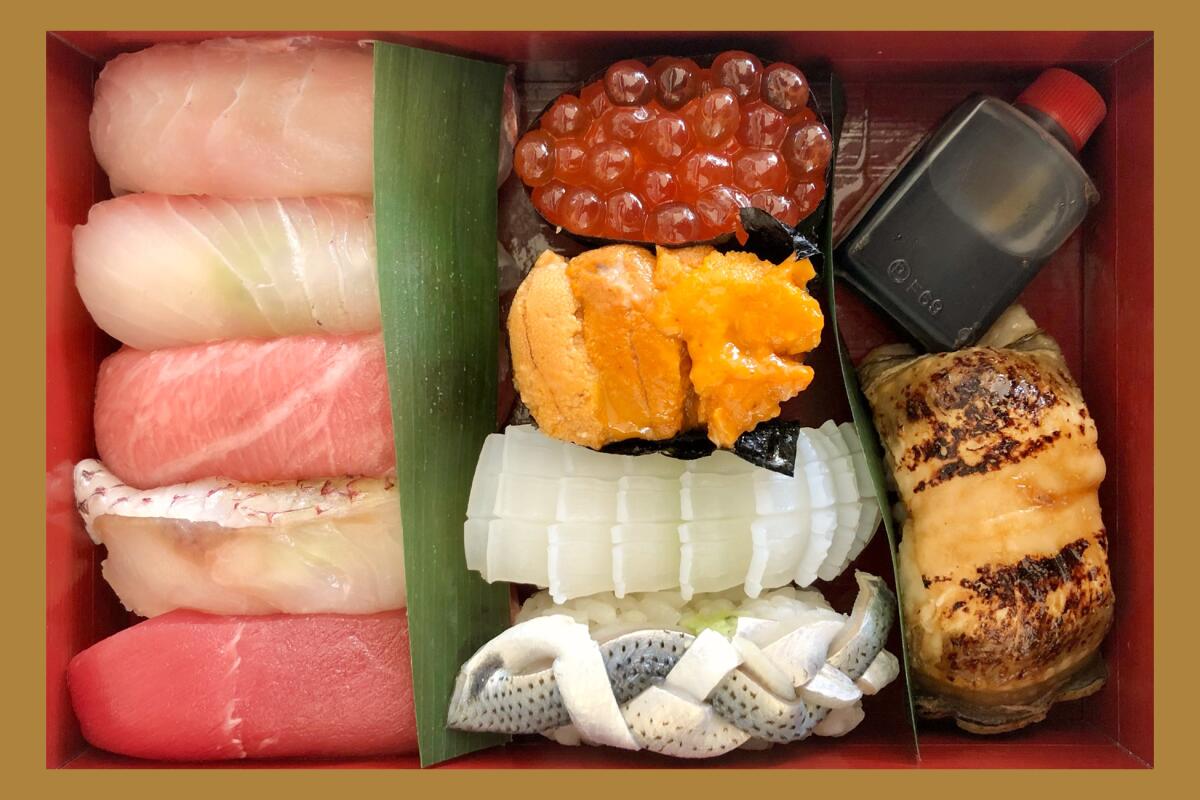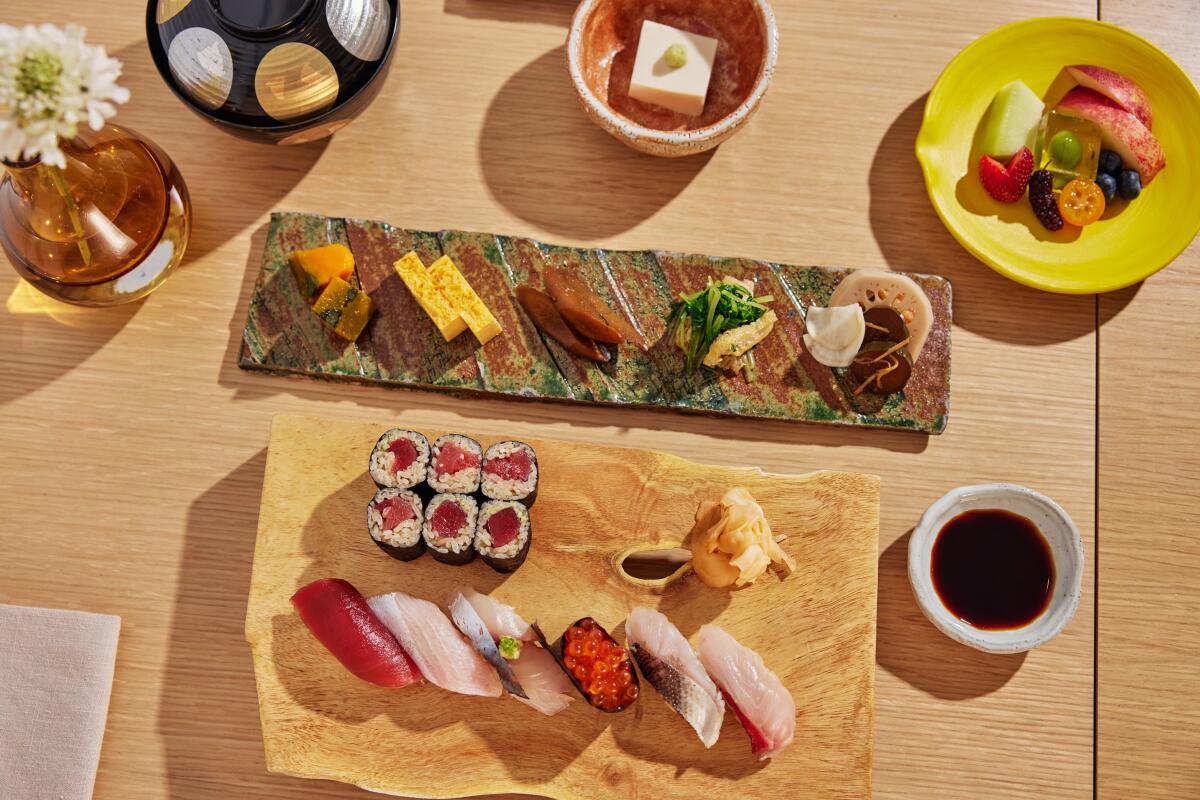
21 places in L.A. to find the best sushi, omakase, chirashi and more
- Share via
Los Angeles is the best sushi town in America. We know this, even if that’s the only thing around the subject we may agree on.
Are you in a traditionalist or maximalist mood? Do you want maki filled simply with kanpyo (dried gourd) in the strictest Edomae fashion? A few moments of rapport with the chef shaping pieces of nigiri just for you? Or are you headed out for a deep-fried roll filled with spicy tuna, cream cheese and avocado and zigged with sauces that match the Lakers’ team colors?
The current generation of omakase chefs in Los Angeles are returning to the essence of the cuisine. A trip to Tokyo confirms what’s been driving their pursuit for excellence.
What’s the occasion: blowout omakase, takeout chirashi or a wind-down evening at your neighborhood strip-mall sushi bar?
There are no wrong answers. But I have been eating a lot of sushi lately, so I have many fresh opinions.
My tastes lean classical and stripped down, and I’m in luck: So many of our best sushi chefs have been reconnecting with the roots of the cuisine, wedding their creativity to a focus on immaculate seafood and, of equal importance, fragrant and exactingly seasoned rice. (The rice is really, really important.)
This is your guide to what the best sushi city in America has to offer, from the ultimate California roll to spectacular omakase.
The restaurants on this list admittedly lean to omakases: If you’re shelling out hundreds of dollars for an evening of appetizers and nigiri, you should know which ones are worth it. For affordability, I will directly point out Gen and Hama in Little Tokyo and, for a filling and modestly priced top-shelf nigiri at a counter, Kisen in Arcadia.
Sushi, like so much in L.A., seems to evolve at an ever more rapid pace. My wish for the city’s sushi restaurants generally is to push its sake lists forward: California has better access than ever to Japanese sake, which is an astonishing beverage in its variety and seasonality and pricing tiers. Most of what we see on menus here is dull and affordable or comically overpriced.
The actual sushi? That we have in wondrous plenty, as these 21 restaurants — a top 10 and 11 additional standouts — attest.
1. Morihiro
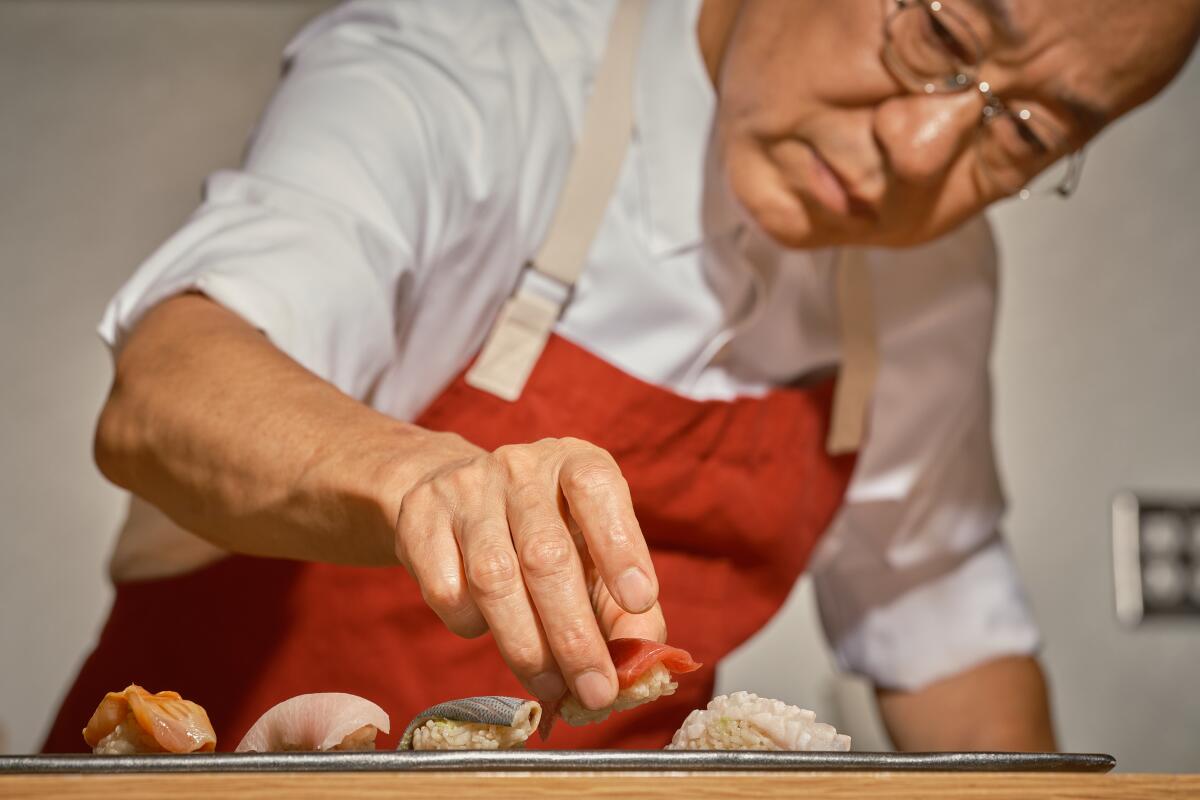
He helped codify an L.A. style of omakase in which small dishes — some of which reflect technique-focused kaiseki traditions (a zensai plate of tiny, seasonal bites) and some of which spring from his imagination (big-eye tuna tartare dolloped with a heaping tablespoon of caviar) — precede the parade of sushi. A table is a fine option, but if you can, splurge on a seat at the sushi bar in front of the master himself. Nigiri is spectacular when it begins arriving from Onodera’s hands, with equal attention to superior seafood and daily milled, meticulously seasoned shari (vinegared rice). Handsome ceramics bring another level of beauty; Onodera made many of the plates himself. Seiichi Daimo, a certified sake sommelier, pours the most compelling pairings of any sushi bar in L.A. Rather than the hushed environments of most top-tier sushi bars, Morihiro has a boisterous warmth. You will leave very full and very cheered.
2. Sushi Kaneyoshi
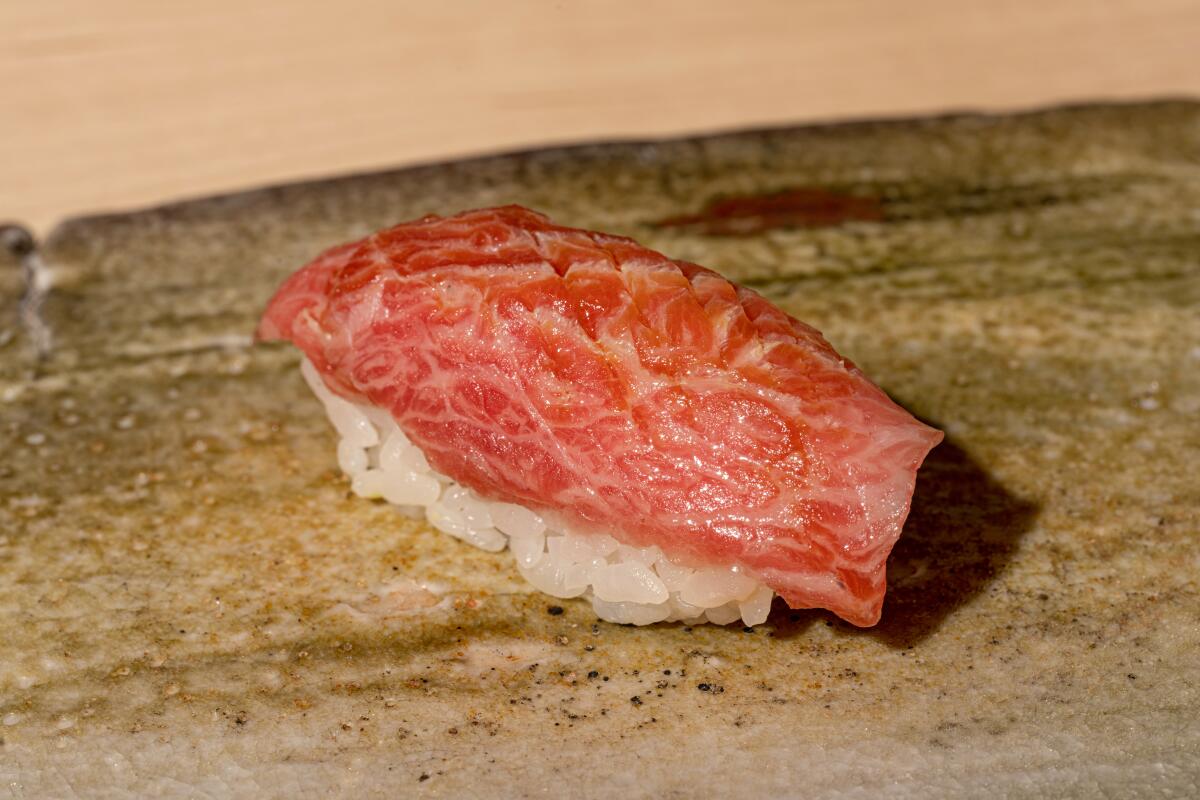
3. Sushi I-Naba
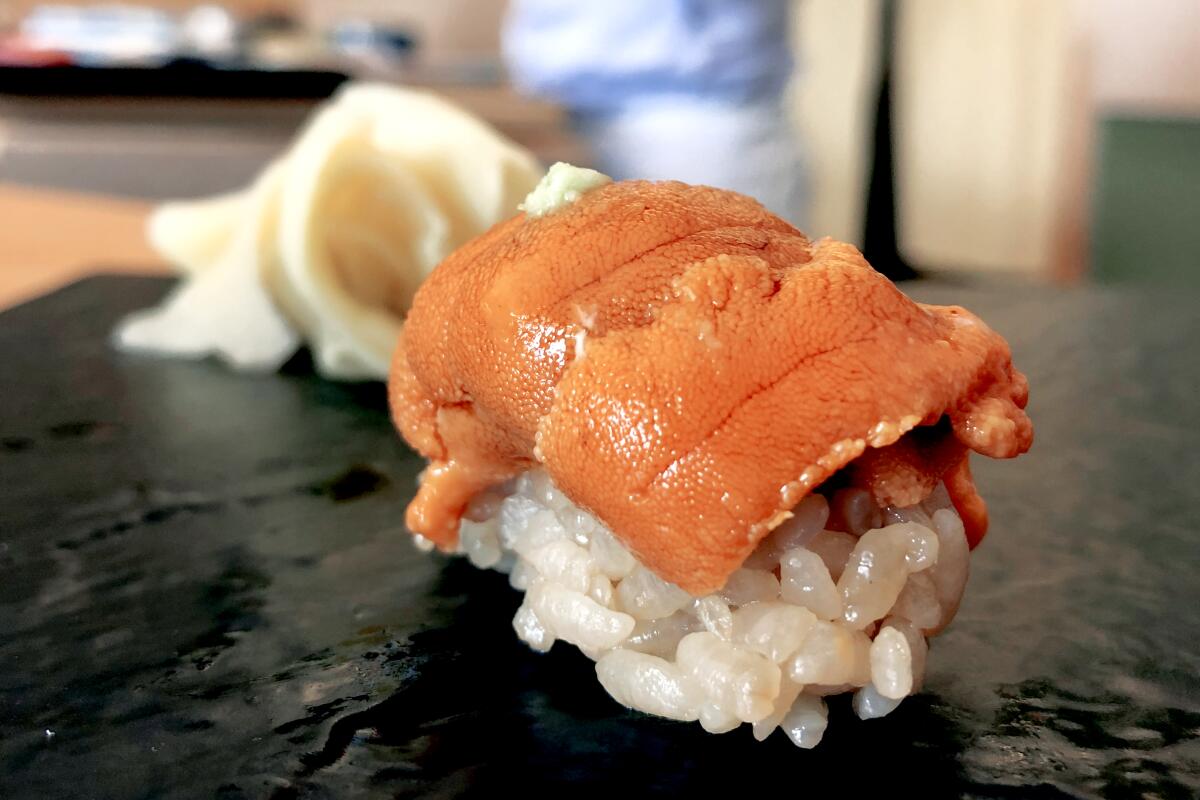
4. Sushi Kisen

5. Sushi Gen

6. Kogane

7. Sushi Yuen
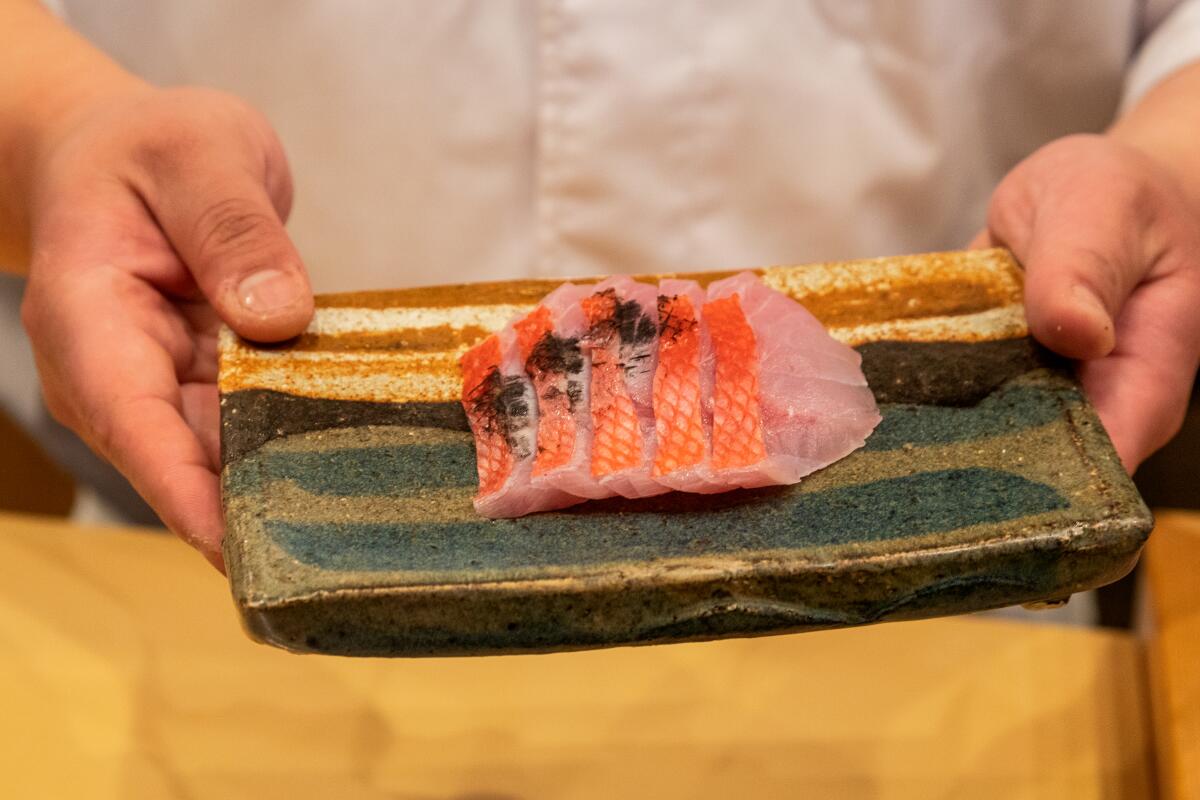
8. Shin Sushi

9. Shunji
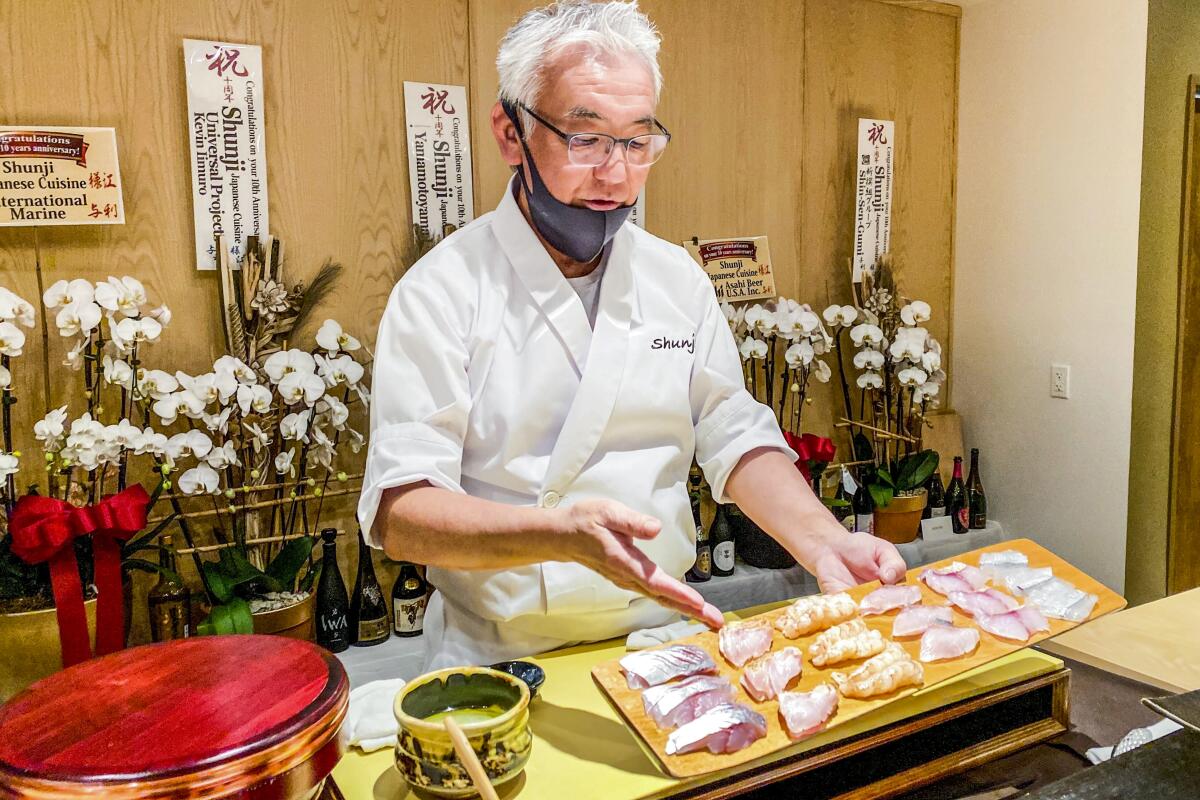
10. Sushi Takeda
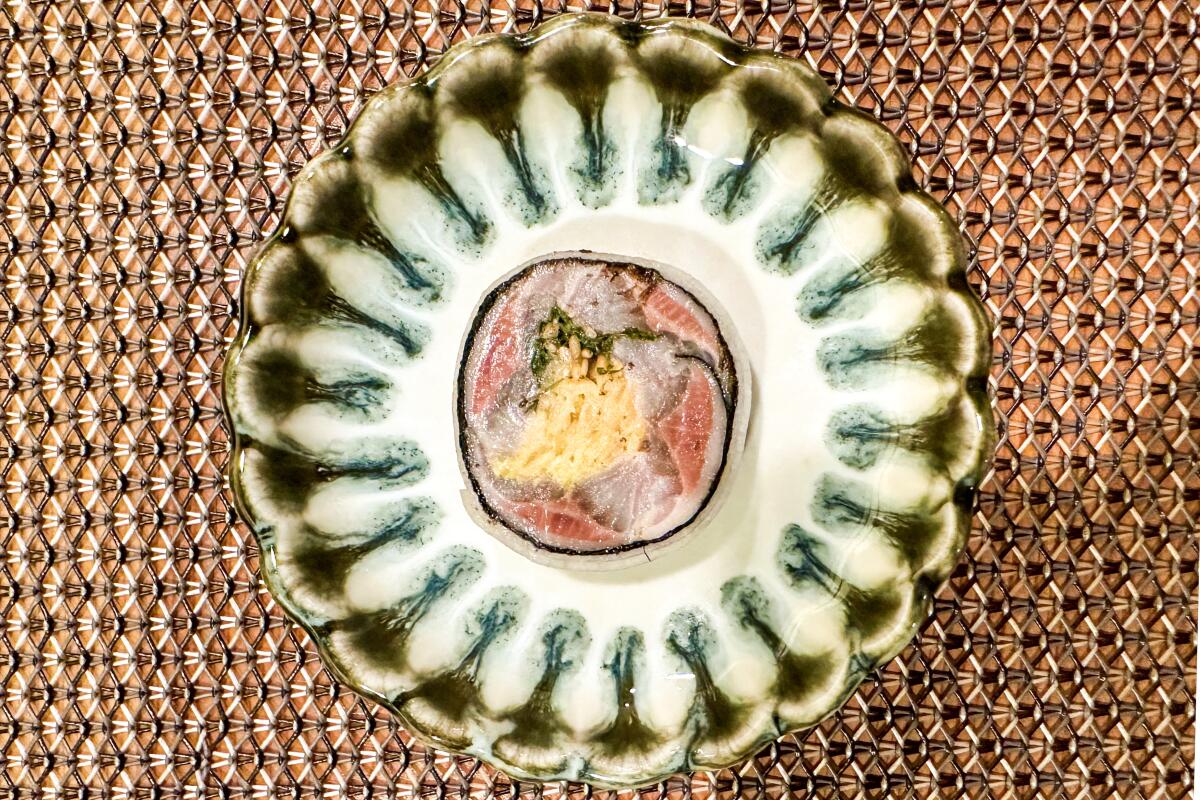
The Brothers Sushi
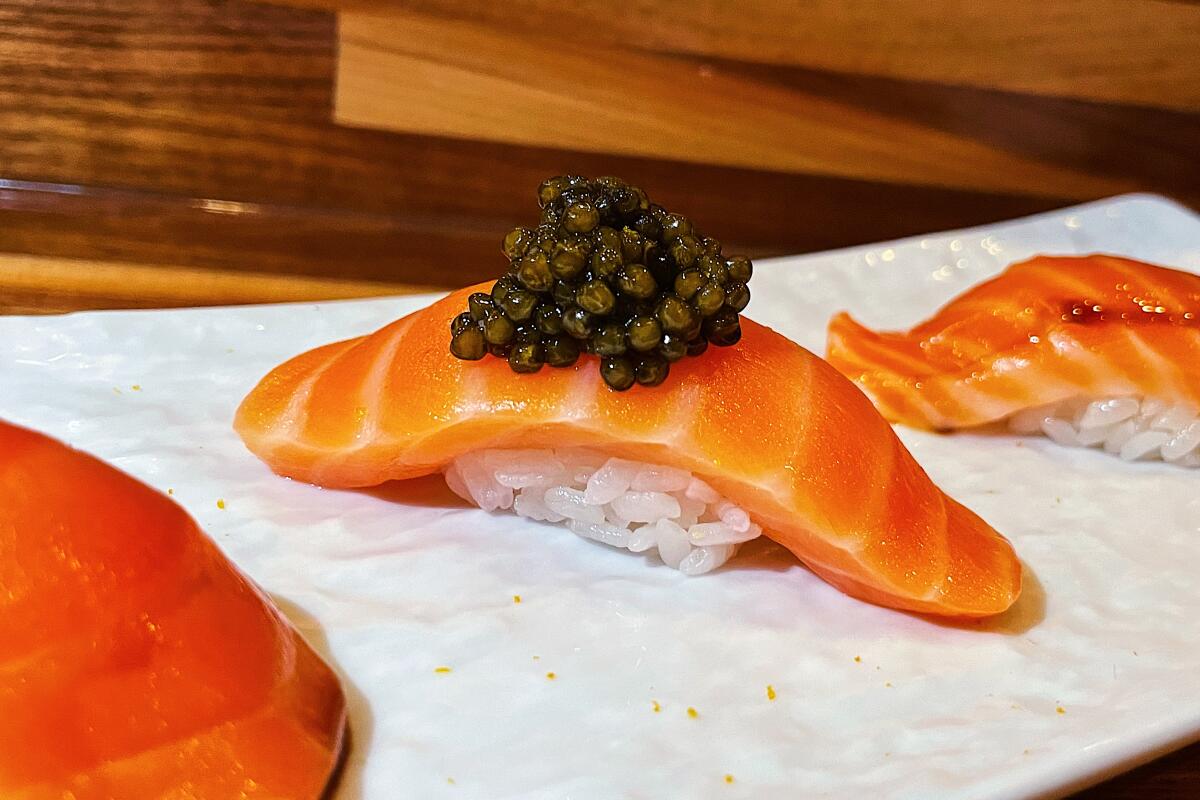
Hama Sushi

Go's Mart
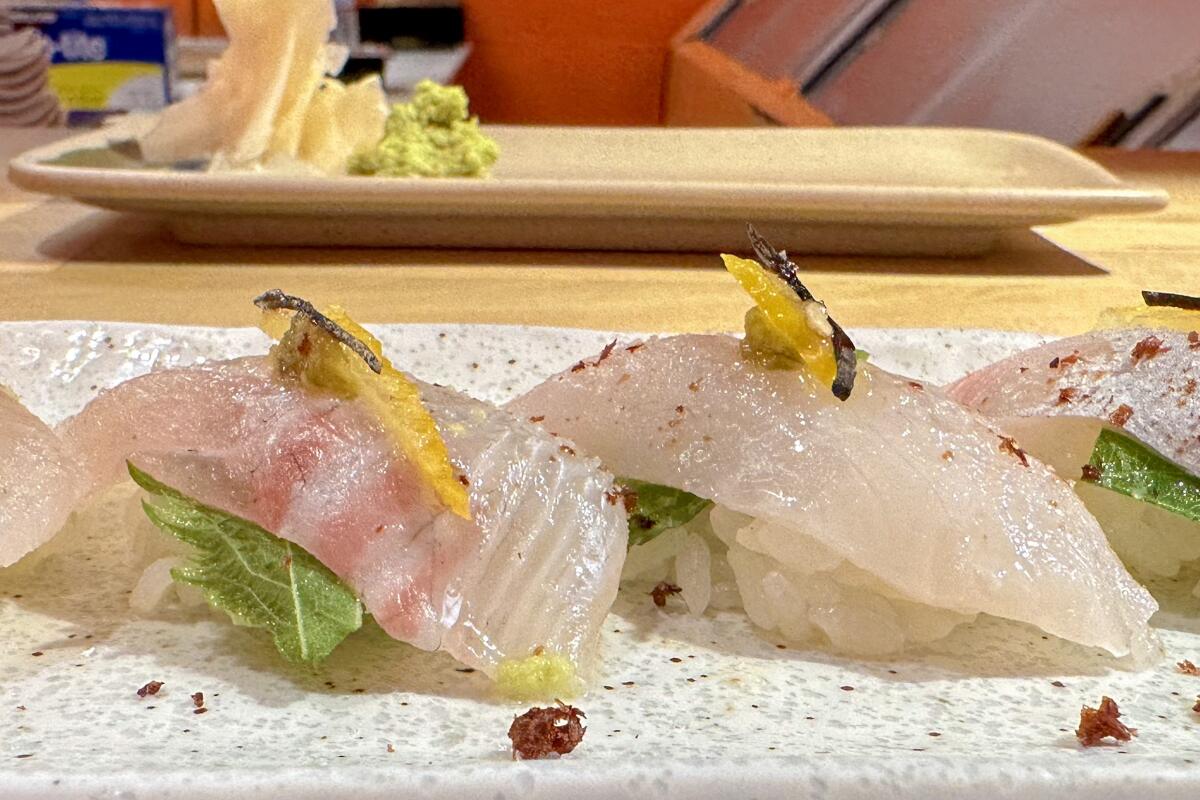
Kenbey Sushi

Matsumoto
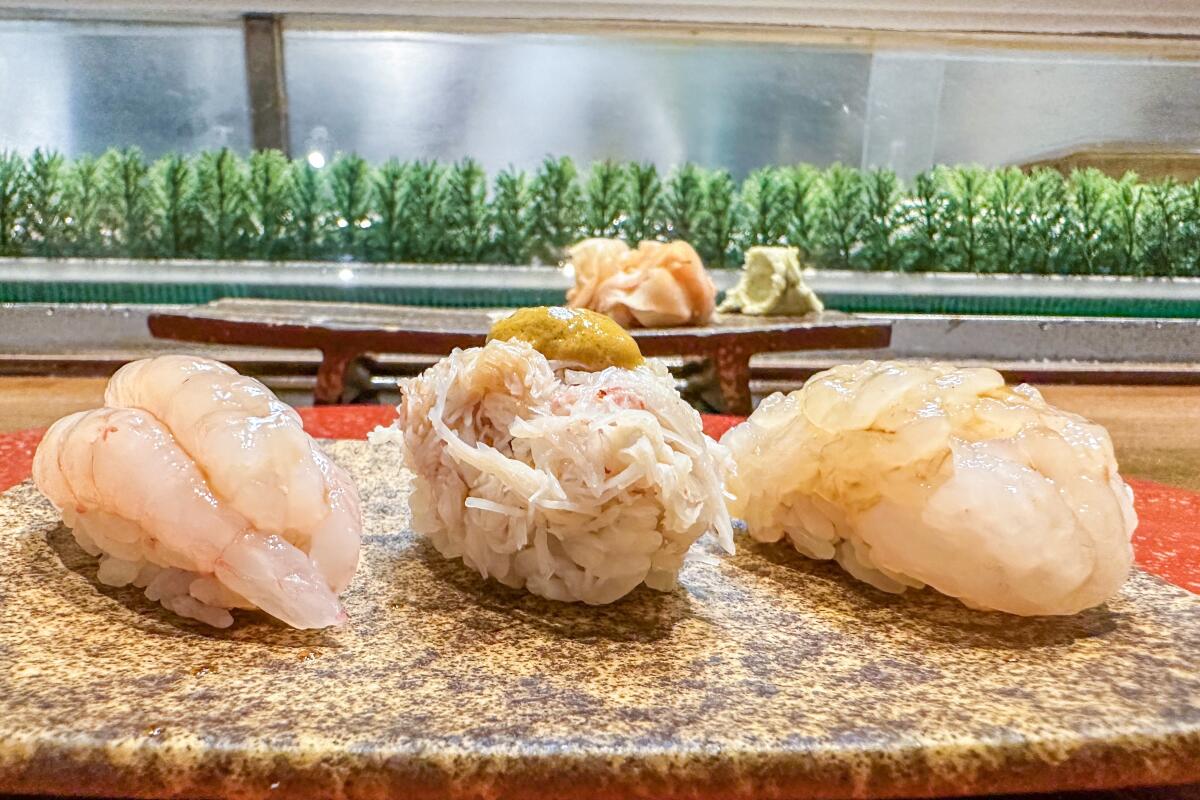
Nozawa Bar
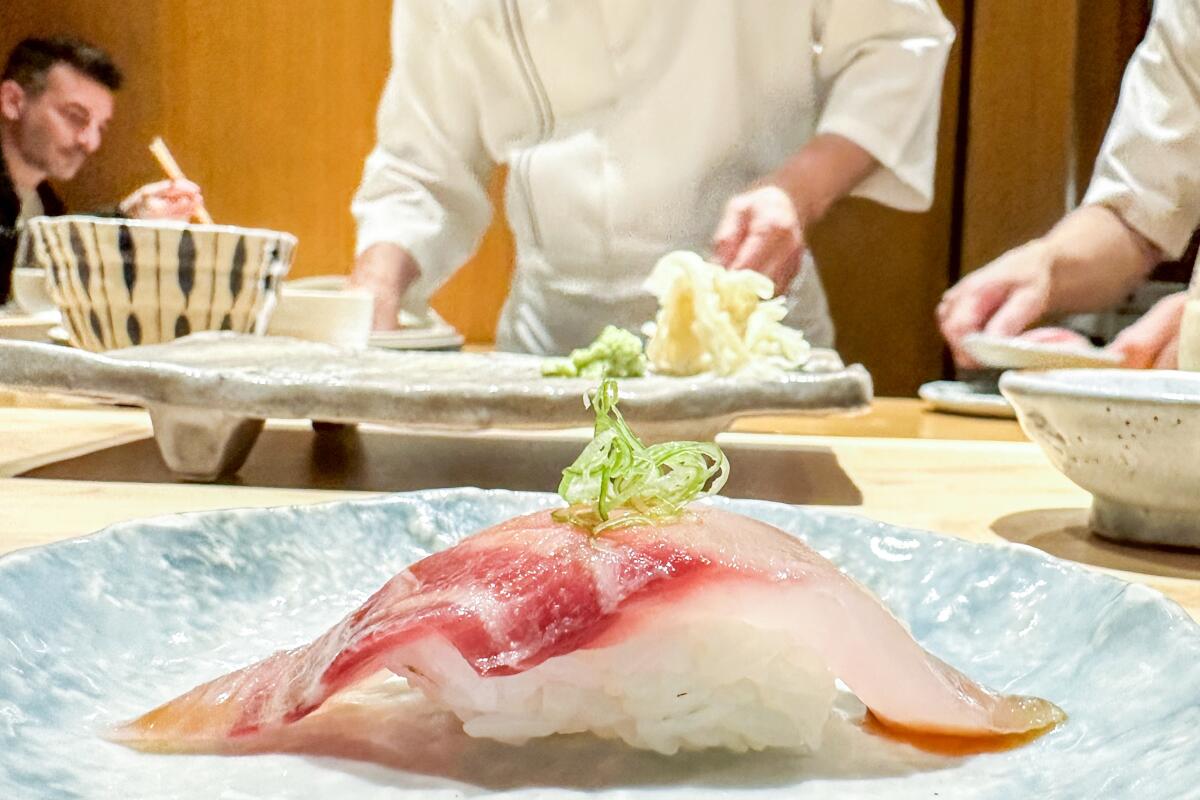
Q Sushi
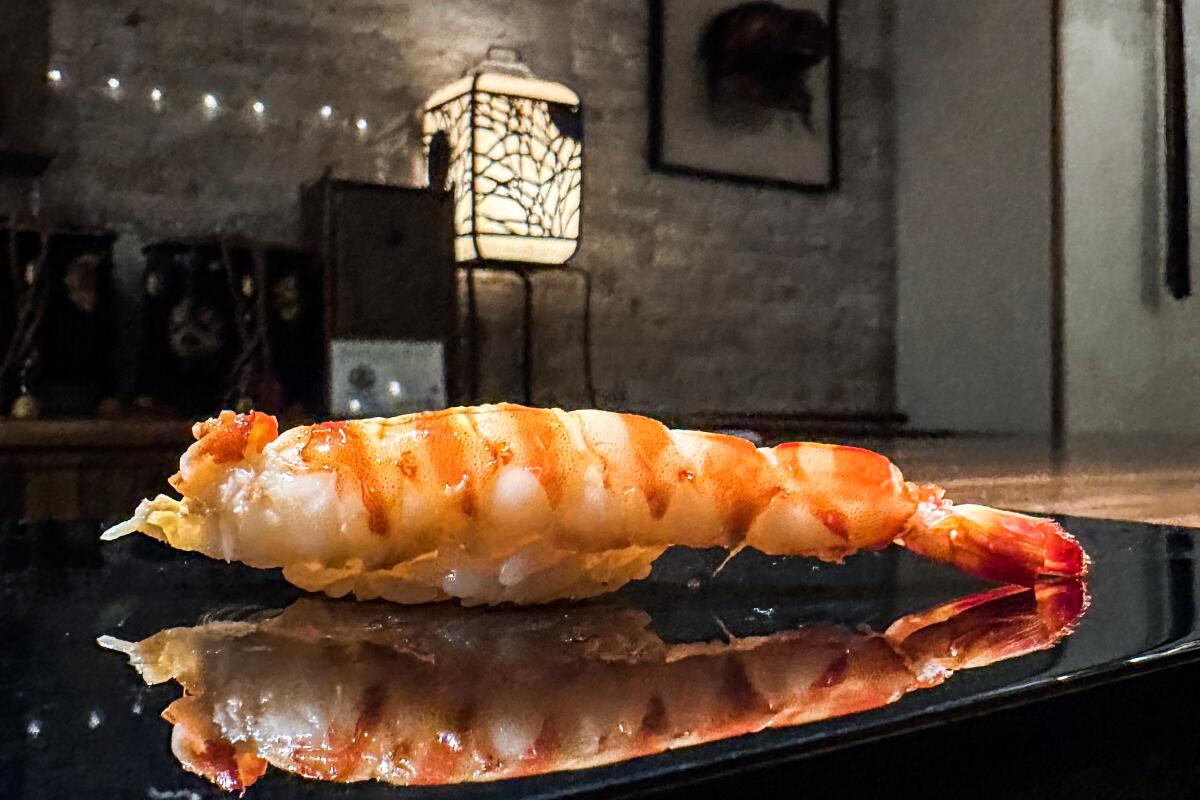
Sushi Chitose
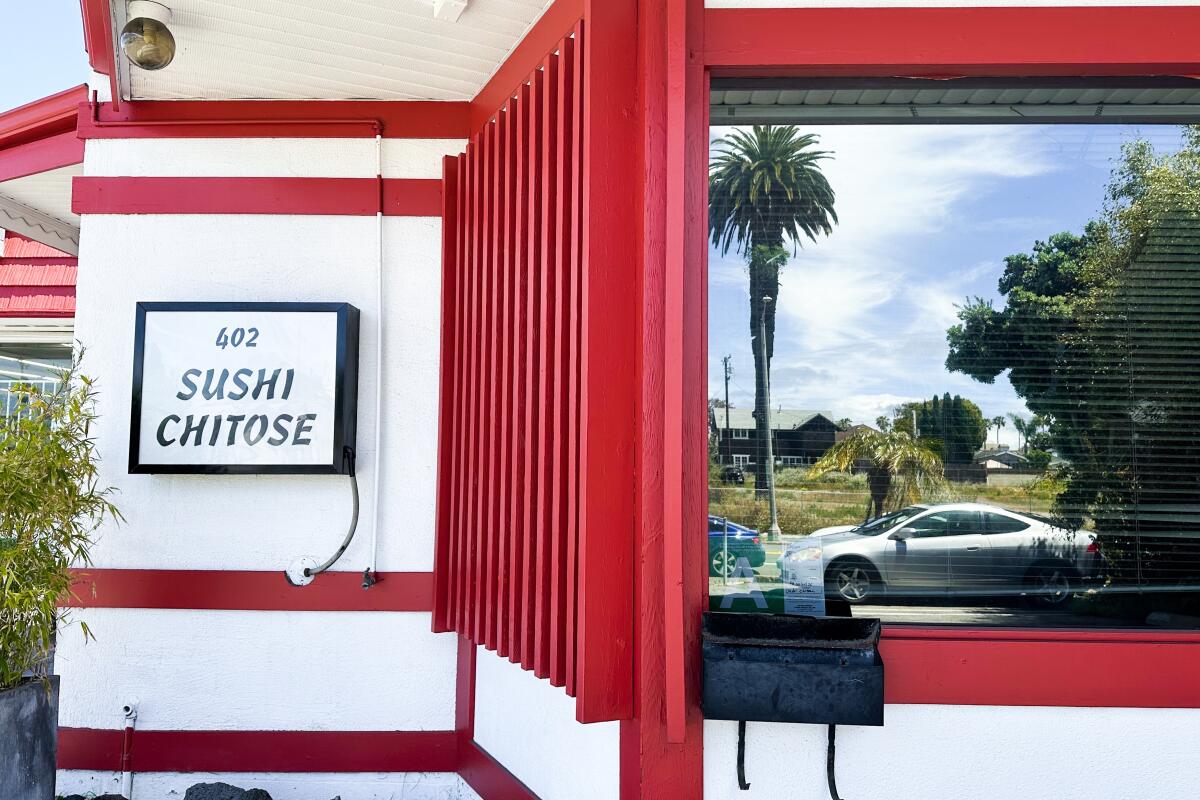
Sushi Ginza Onodera

Sushi Note
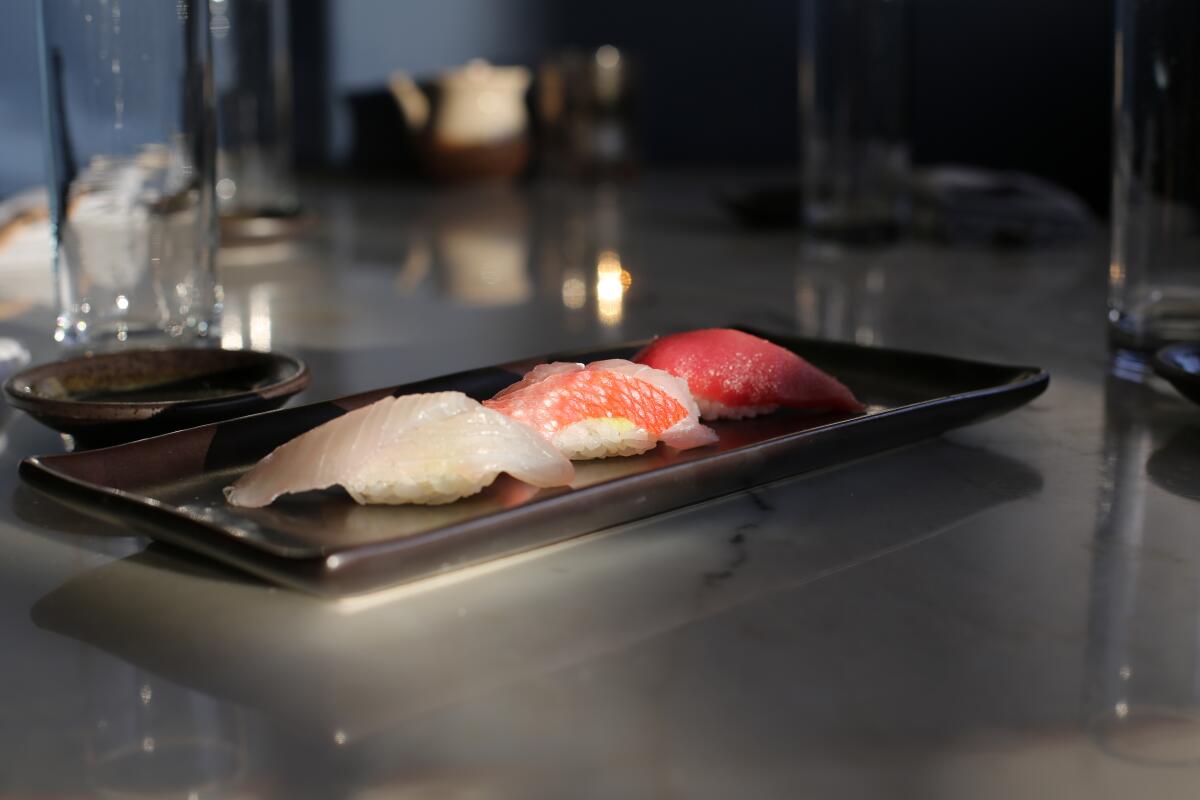
Sushi Tama
